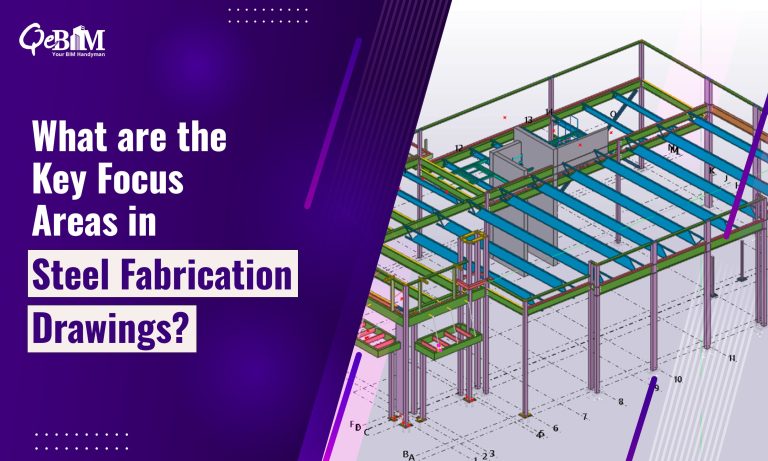What are the Key Focus Areas in Steel Fabrication Drawings?

Steel Fabrication Drawings often termed as Detailed Drawings are the crucial blueprints that translate the design concepts into tangible structures. They serve as the foundation for assembling and fabricating of the steel structures and efficiently. While creating the same, there are few key points you can consider that can significantly enhance the quality and precision of your steel fabrication drawings.
Key Considerations in Steel Fabrication Drawings
1) Accuracy in Measurements and Dimensions
Precision is of great value in steel fabrication. Any inaccuracies in the measurements or dimensions can lead to the costly errors during fabrication as well as assembly. Ensure that all the measurements are cross-checked and adhere strictly to the design specifications. By utilizing advanced measurement tools and software, you can maintain accuracy throughout the drafting process.
2) Clarity of Detailing
Clear and detailed drawings are essential for effective communication between designers, fabricators, and contractors. Include comprehensive views, sections, and details that illustrate every component and connection point. Use different line weights and annotations to differentiate between main elements and smaller details, ensuring clarity at all levels of zoom.
3) Material Specifications and Standards
Understanding material specifications and industry standards is crucial for producing functional and safe structures. Incorporate detailed notes and callouts specifying the type, grade, and dimensions of steel required for each component. Adhering to recognized standards ensures compliance with regulations and improves the integrity of the final structure.
4) Assembly Sequence and Methodology
Consider the assembly process when creating the fabrication drawings. Sequence the assembly steps logically and illustrate any specific methodologies or techniques required. This foresight can streamline the fabrication processes thereby minimizing errors and optimizing labour efficiency on-site.
5) Tolerances and Allowances
Do account for the tolerances and allowances in your drawings to accommodate variations in the material thickness, machining capabilities, and assembly processes. Clearly define acceptable limits for critical dimensions and make sure that all the components fits together effortlessly while fabrication and erection.
6) Quality Control and Inspection Points
Integrate quality control and inspection points into your drawings to facilitate systematic checks throughout the fabrication process. Highlight critical welds, connections, and dimensional checks that requires special attention to ensure the structural integrity and compliance with the project specifications.
7) Safety Considerations
Prioritize safety by incorporating safety-related details and warnings into your drawings. Identify the potential hazards such as sharp edges, heavy components, or restricted access areas. Design components along with ergonomic considerations to facilitate safe handling and installation by workers.
8) Communication with Stakeholders
Effective communication is key to successful project execution. Engage with stakeholders—including designers, engineers, fabricators, and contractors—to clarify requirements, address concerns, and incorporate feedback into your drawings. Clear communication fosters collaboration and minimizes misunderstandings during the fabrication and construction phases.
9) Utilization of CAD Software and Tools
Take full advantage of CAD tools to amp up the precision, accuracy and productivity. Utilize 3D modeling capabilities and top-notch Shop Drawing Services to visualize complex assemblies and detect potential clashes early in the design process. Implement parametric modeling to efficiently modify designs and respond to change requests promptly.
10) Documentation and Revision Control
Maintain thorough documentation and revision control throughout the drafting process. Clearly label and archive drawings, revisions, and the supplementary documents to assure the accountability. Implement a systematic approach to managing changes and updates to prevent discrepancies during fabrication and construction.
Conclusion
Producing high-quality steel fabrication drawings requires keen eye to detail, apt tools, compliance to the necessary standards, strict analysis, as well as effective communication. By focusing on accuracy, clarity, and comprehensive detailing, you can streamline fabrication processes, minimize errors, and deliver projects on time and within budget. Embrace technological advancements in CAD software and collaborate well with the team and get optimal results. Incorporating the above pointers not only elevates the efficiency of the project but also reduces the costs thereby contributing to the safe, functional, and sustainable built environment.